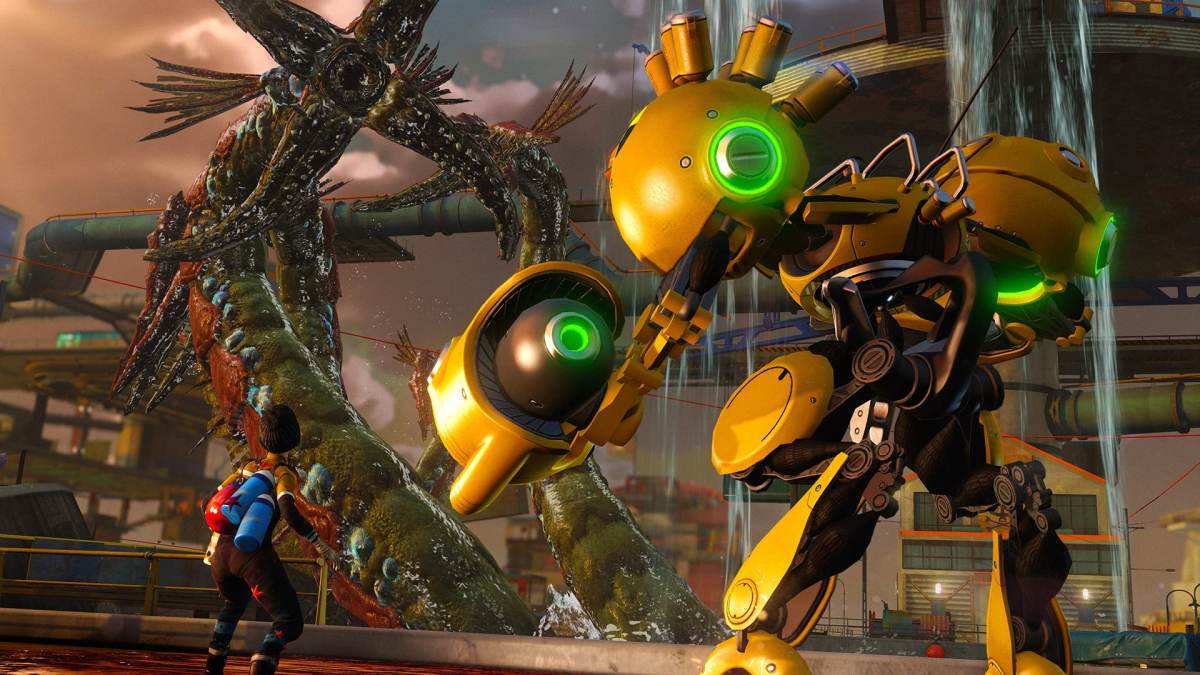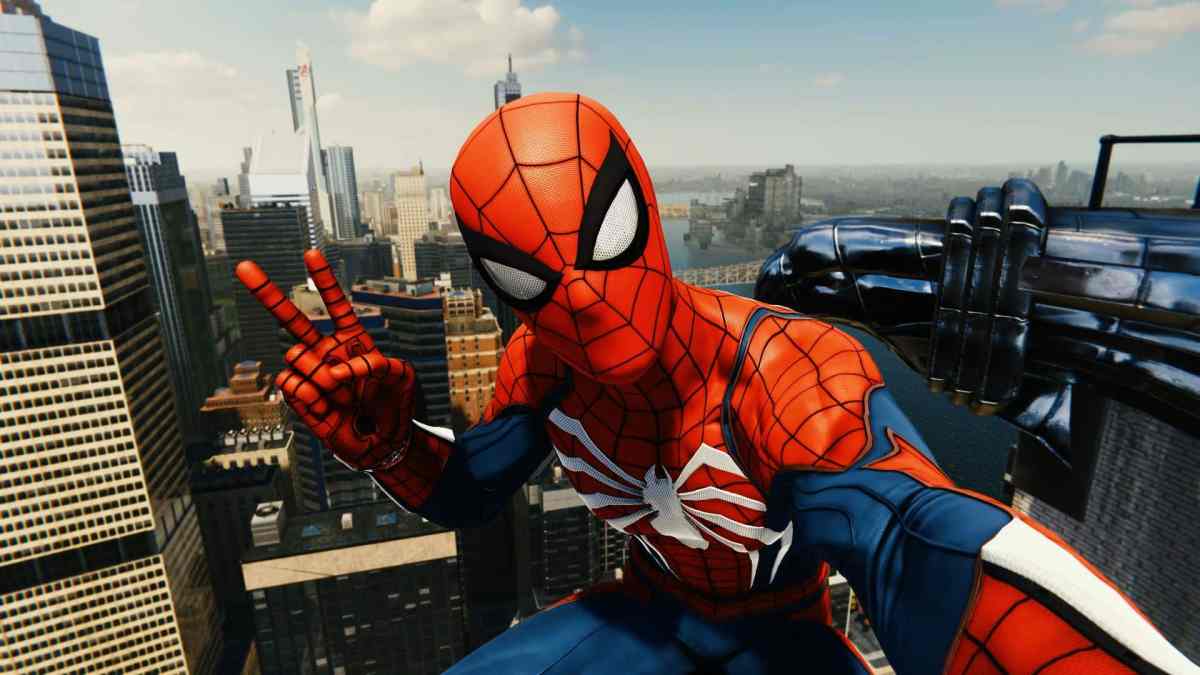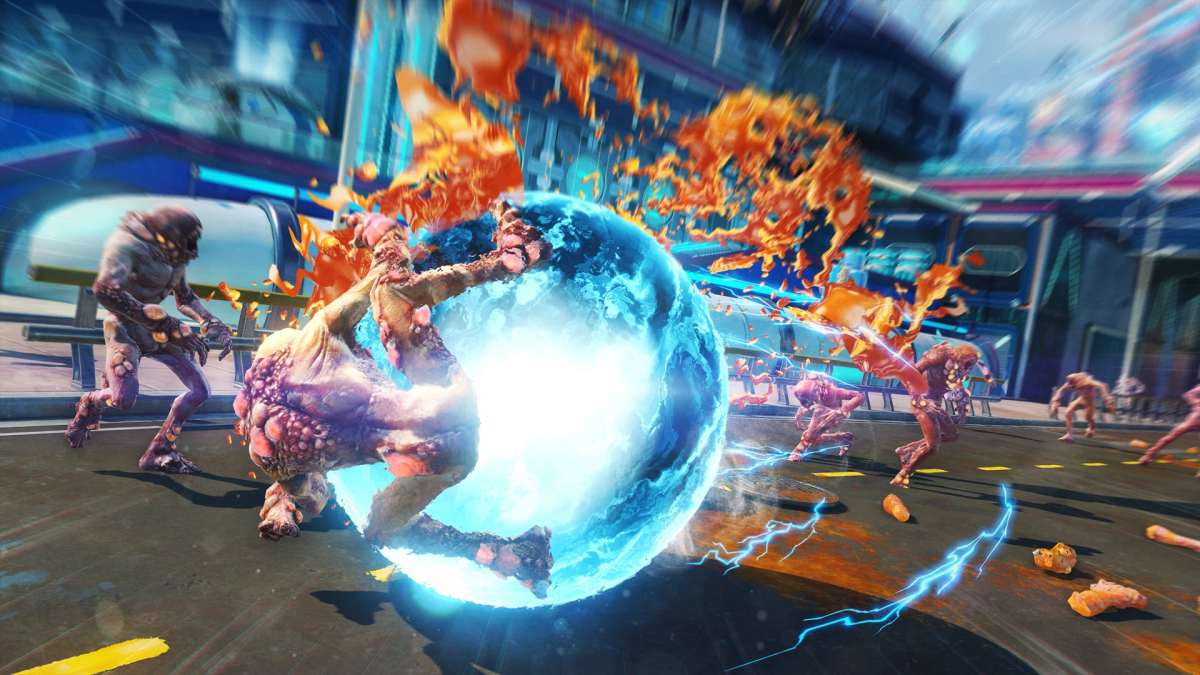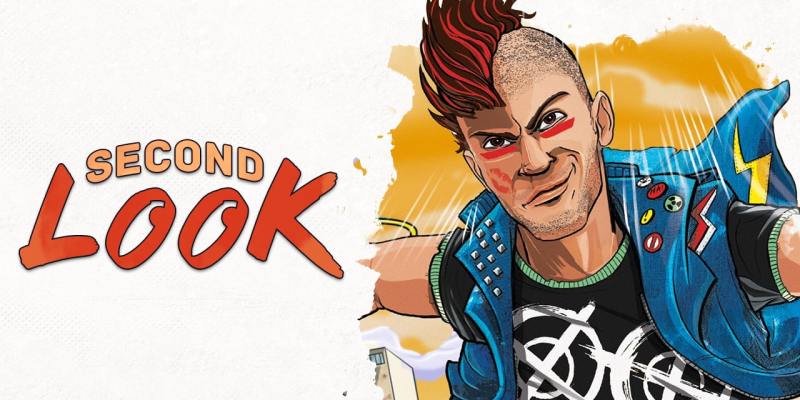Sunset Overdrive is Insomniac Games at its best. Everything about the sandbox platforming shooter perfectly connects into a joyful explosion of passion. In many ways it’s the endgame for the same design principles instilled by Ratchet & Clank, its ideas taken to an unparalleled scale. An evil energy drink has turned the masses into mutant zombie monsters. Survivors are divided between those clinging to their humanity in the nerdiest ways possible and jerks who shoot those nerds on sight, which is where you come in — a nameless, customizable dork out to save the world, no matter how many fourth walls you’ll break in the process.
Built as a flagship Xbox One title, Sunset Overdrive also embraces generation-defining concepts like perfect suspended pausing that jumps right back in without a loading screen, integrated community features, and seamless multiplayer across its massive open world. The game’s as much a technical showcase as it is a design masterpiece, with every element clicking into one cohesive whole.
That’s why I’m surprised at what’s come from Insomniac Games since for the PlayStation 4. It’s surreal that Insomniac has released two of the biggest console exclusives of this generation on competing platforms. Crazier still that each has similar central designs, themes, and the same lead voice actor. Yet it’s the one everyone forgets that is the developer’s outstanding masterpiece.
I bring up Marvel’s Spider-Man alongside Sunset Overdrive because there are a few crucial things that give Sunset Overdrive a leg up on its little brother. To put it simply, Sunset Overdrive is as much a sandbox shooter as it is a platforming rhythm game. The parkour systems underlying your movement are all about chaining each leap and grind for the highest boost to your weapon-boosting amp meter, all while also keeping away from enemies. You’re constantly considering how you can harness the environment to your own ends without any overt user interface designating it as such.

Every facet of Sunset Overdrive’s world screams out to you like a jungle gym, promising new routes worth trying. Instead of just towering polygons that get in your way, even the tallest buildings serve a purpose and promise some new surprise waiting for those who venture forth. It’s a brilliant incentive to take in the environment and makes for a memorable world that you grow to know, navigating without having to consult a minimap.
Meanwhile Spider-Man’s navigational systems don’t really factor into anything besides moving from place to place. Outside of sidequests, web swinging merely exists to give a sense of scale to the world, a scale that immediately vanishes when you play most story content in more linear spaces. Spider-Man definitely feels great at first, but there’s no real engagement to it. Web-swinging does build up your Focus points for health regeneration, but your health resets while traveling anyway. You also rarely swing mid-mission to get some breathing room for this to kick in, so the two elements remain divorced where they dance together in Sunset Overdrive.
That said, we all know the real meat to any Insomniac game is combat. Sunset Overdrive leans heavily into that jungle gym mentality, forcing you to leap around your opponents due to how little health you have. The only way to stay alive is to lean into your arsenal of gonzo guns and gadgets. Be it plush animal RPGs, seismic bowling balls, automatic handgun drones, or bouncing vinyl record assault rifles, everything auto-targets so that you can focus on enemy prioritization and movement.
Nothing gets in the way of your experiencing every aspect of the game in perfect synchronization. If anything, treating Sunset Overdrive like a standard third-person action game means almost certain doom for you — even if all the respawn animations are pretty hilarious. Every element works to naturally educate you to get the most out of the experience. Beyond this intuitive nudge to get into the flow of things, players are given total agency over their character, equipment, and what strategies they implement.

By contrast, Spider-Man weirdly goes out of its way to ensure that you don’t rely on your arsenal and wits. You only earn the most Focus by fighting in the most basic way possible — brawling. Except brawling has less impact, its sound design registering like you’re aggressively punching cardboard boxes. Spider-Man is supposed to be a science wiz who outthinks his opponents as quickly as he dodges their blows.
It’s not that this hasn’t clearly been explored by Insomniac. Spider-Man has impact web that can take out an enemy faster than any punch, anti-gravity grenades that open up heavy enemies, web mines that work in stealth and combat, web bombs for quick crowd control, spider-bots to distract enemies, ultimate abilities for his suits that are absolute game changers — and more! Yet these gadgets are all capped to a handful of charges, randomly regaining charges for mid-brawling.
It’s not even that gadgets make things easy enough that you don’t need health regeneration. A few lucky hits leave Peter hurting like Sunset Overdrive’s lead, but Spider-Man counterintuitively tells you to rely more on brute force in these moments rather than thinking on your feet. Again, you’re being nudged in a direction, but it’s in the opposite direction Sunset Overdrive sends you.
Where Sunset Overdrive eagerly allows you to come up with creative strategies on the offense and defense across a variety of missions, Spider-Man punishes you for trying to be smart. Even a perfect stealth attack by Spider-Man typically results in being met with several waves of thugs to brawl with regardless. This is a damn shame, because like Sunset Overdrive’s most unique weapons, Spider-Man’s gadgets are as amazing to use as they are unbelievable that you can wield them with impunity.

It’s not that Sunset Overdrive is flawless or without some bland options. There’s a generic AK-47 as well as a revolver that have all the personality of a blank wall, but you’re not forced to use them. Instead, much like the Combustor pistol in Insomniac’s Ratchet & Clank series, these weapons exist as training wheels to ease you into the more eccentric gameplay possibilities. Ideally Spider-Man would do the same, with basic brawling giving way to more complex gadget use and strategies. Arkham City and its successors implemented this to brilliant effect. However, even Spider-Man’s final boss fight ignores this in favor of spamming your default webbing before going in for a few punches.
It’s no question that Spider-Man is stronger and far more mature at its storytelling and presentation. That said, for all its over-the-top characters and pop culture references, Sunset Overdrive’s uncompromising nature leads to a more whole experience. It captures everything Insomniac’s best at, from a gonzo arsenal of weapons to interweaving gameplay elements that immerse you into the logic of each marvelous world. Sure, not every one-liner lands, but Sunset Overdrive walks it off with unfiltered confidence in every aspect. There’s no backpedaling gameplay mechanics or separating key elements.
That’s why Sunset Overdrive so perfectly defines Insomniac Games. They aren’t, at least usually, a team that caters to anyone but themselves. They’re ambitious, bold, and loud as they construct worlds as fun to watch in motion as they are to play for yourself. I’m not sure what happened with Spider-Man, but I’m grateful Sunset Overdrive exists. Its design is fluid in a way most games could only dream, and it embraces its sense of freedom both mechanically and artistically.
One can only hope that, whatever Insomniac works on next, it tops Sunset Overdrive, but with the game finally ported to Steam, now is the perfect time to chill out in Sunset City. Save the world and be whomever you want to be in the most optimistic apocalypse this side of Days Gone.
